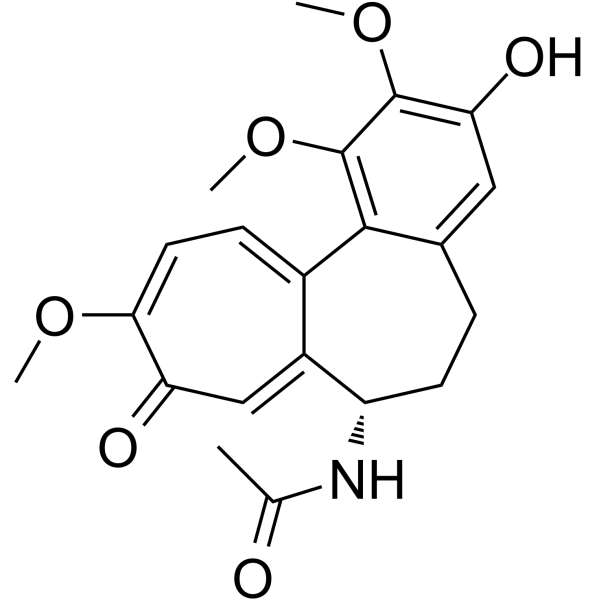Immunology/Inflammation
The immune and inflammation-related pathway including the Toll-like receptors pathway, the B cell receptor signaling pathway, the T cell receptor signaling pathway, etc.
Toll-like receptors (TLRs) play a central role in host cell recognition and responses to microbial pathogens. TLR4 initially recruits TIRAP and MyD88. MyD88 then recruits IRAKs, TRAF6, and the TAK1 complex, leading to early-stage activation of NF-κB and MAP kinases [1]. TLR4 is endocytosed and delivered to intracellular vesicles and forms a complex with TRAM and TRIF, which then recruits TRAF3 and the protein kinases TBK1 and IKKi. TBK1 and IKKi catalyze the phosphorylation of IRF3, leading to the expression of type I IFN [2].
BCR signaling is initiated through ligation of mIg under conditions that induce phosphorylation of the ITAMs in CD79, leading to the activation of Syk. Once Syk is activated, the BCR signal is transmitted via a series of proteins associated with the adaptor protein B-cell linker (Blnk, SLP-65). Blnk binds CD79a via non-ITAM tyrosines and is phosphorylated by Syk. Phospho-Blnk acts as a scaffold for the assembly of the other components, including Bruton’s tyrosine kinase (Btk), Vav 1, and phospholipase C-gamma 2 (PLCγ2) [3]. Following the assembly of the BCR-signalosome, GRB2 binds and activates the Ras-guanine exchange factor SOS, which in turn activates the small GTPase RAS. The original RAS signal is transmitted and amplified through the mitogen-activated protein kinase (MAPK) pathway, which including the serine/threonine-specific protein kinase RAF followed by MEK and extracellular signal related kinases ERK 1 and 2 [4]. After stimulation of BCR, CD19 is phosphorylated by Lyn. Phosphorylated CD19 activates PI3K by binding to the p85 subunit of PI3K and produce phosphatidylinositol-3,4,5-trisphosphate (PIP3) from PIP2, and PIP3 transmits signals downstream [5].
Central process of T cells responding to specific antigens is the binding of the T-cell receptor (TCR) to specific peptides bound to the major histocompatibility complex which expressed on antigen-presenting cells (APCs). Once TCR connected with its ligand, the ζ-chain–associated protein kinase 70 molecules (Zap-70) are recruited to the TCR-CD3 site and activated, resulting in an initiation of several signaling cascades. Once stimulation, Zap-70 forms complexes with several molecules including SLP-76; and a sequential protein kinase cascade is initiated, consisting of MAP kinase kinase kinase (MAP3K), MAP kinase kinase (MAPKK), and MAP kinase (MAPK) [6]. Two MAPK kinases, MKK4 and MKK7, have been reported to be the primary activators of JNK. MKK3, MKK4, and MKK6 are activators of P38 MAP kinase [7]. MAP kinase pathways are major pathways induced by TCR stimulation, and they play a key role in T-cell responses.
Phosphoinositide 3-kinase (PI3K) binds to the cytosolic domain of CD28, leading to conversion of PIP2 to PIP3, activation of PKB (Akt) and phosphoinositide-dependent kinase 1 (PDK1), and subsequent signaling transduction [8].
References
[1] Kawai T, Akira S. The role of pattern-recognition receptors in innate immunity: update on Toll-like receptors[J]. Nature immunology, 2010, 11(5): 373-384.
[2] Kawai T, Akira S. Toll-like receptors and their crosstalk with other innate receptors in infection and immunity[J]. Immunity, 2011, 34(5): 637-650.
[3] Packard T A, Cambier J C. B lymphocyte antigen receptor signaling: initiation, amplification, and regulation[J]. F1000Prime Rep, 2013, 5(40.10): 12703.
[4] Zhong Y, Byrd J C, Dubovsky J A. The B-cell receptor pathway: a critical component of healthy and malignant immune biology[C]//Seminars in hematology. WB Saunders, 2014, 51(3): 206-218.
[5] Baba Y, Matsumoto M, Kurosaki T. Calcium signaling in B cells: regulation of cytosolic Ca 2+ increase and its sensor molecules, STIM1 and STIM2[J]. Molecular immunology, 2014, 62(2): 339-343.
[6] Adachi K, Davis M M. T-cell receptor ligation induces distinct signaling pathways in naive vs. antigen-experienced T cells[J]. Proceedings of the National Academy of Sciences, 2011, 108(4): 1549-1554.
[7] Rincón M, Flavell R A, Davis R A. The Jnk and P38 MAP kinase signaling pathways in T cell–mediated immune responses[J]. Free Radical Biology and Medicine, 2000, 28(9): 1328-1337.
[8] Bashour K T, Gondarenko A, Chen H, et al. CD28 and CD3 have complementary roles in T-cell traction forces[J]. Proceedings of the National Academy of Sciences, 2014, 111(6): 2241-2246.
Targets for Immunology/Inflammation
- Cyclic GMP-AMP Synthase(1)
- Apoptosis(137)
- 5-Lipoxygenase(18)
- TLR(106)
- Papain(2)
- PGDS(1)
- PGE synthase(26)
- SIKs(10)
- IκB/IKK(83)
- AP-1(2)
- KEAP1-Nrf2(47)
- NOD1(1)
- NF-κB(265)
- Interleukin Related(129)
- 15-lipoxygenase(2)
- Others(10)
- Aryl Hydrocarbon Receptor(35)
- CD73(16)
- Complement System(46)
- Galectin(30)
- IFNAR(19)
- NO Synthase(78)
- NOD-like Receptor (NLR)(37)
- STING(84)
- Reactive Oxygen Species(434)
- FKBP(14)
- eNOS(4)
- iNOS(24)
- nNOS(21)
- Glutathione(37)
- Adaptive Immunity(144)
- Allergy(129)
- Arthritis(25)
- Autoimmunity(134)
- Gastric Disease(64)
- Immunosuppressants(27)
- Immunotherapeutics(3)
- Innate Immunity(411)
- Pulmonary Diseases(76)
- Reactive Nitrogen Species(43)
- Specialized Pro-Resolving Mediators(42)
- Reactive Sulfur Species(24)
Products for Immunology/Inflammation
- Cat.No. Nom du produit Informations
-
GC41207
17(R)-HDHA
Resolvins are a group of polyhydroxylated metabolites of docosahexaenoic acid (DHA) found in the inflammatory exudates of aspirin-treated experimental animals.

-
GC49178
17(R)-Protectin D1
An aspirin-triggered epimer of protectin D1

-
GC41951
17(R)-Resolvin D1
Resolvins are a family of potent lipid mediators derived from both eicosapentaenoic acid and docosahexaenoic acid.

-
GC41227
17(R)-Resolvin D1 methyl ester
17(R)-Resolvin D1 (17(R)-RvD1) is an aspirin-triggered epimer of RvD1 that reduces human polymorphonuclear leukocyte transendothelial migration, the earliest event in acute inflammation, with equipotency to RvD1 (EC50 = ~30 nM).

-
GC45307
17(R)-Resolvin D3

-
GC41952
17(R)-Resolvin D4
17(R)-Resolvin D4 (17(R)-RvD4) is an aspirin-triggered epimer of RvD4 .

-
GC41208
17(S)-HDHA
17(S)-HDHA is a primary mono-oxygenation product of docosahexaenoic acid in human whole blood, human leukocytes, and mouse brain.

-
GC40975
17(S)-HpDHA
17(S)-HpDHA is a mono-oxygenation product of docosahexaenoic acid in human whole blood, human leukocytes, human glial cells, and mouse brain.

-
GC41958
17-hydroxy Venturicidin A
La 17-hydroxy venturicidine A (YP-02259L-C) est un composé antimicrobien. La 17-hydroxy venturicidine A inhibe la croissance des deux champignons filamenteux testés (Verticillium dahlia et Fusarium sp.

-
GC41980
18-carboxy dinor Leukotriene B4
18-carboxy dinor Leukotriene B4 (18-carboxy dinor LTB4) is a β-oxidation metabolite of LTB4.

-
GC41982
19,20-Epoxycytochalasin C
La 19,20-époxycytochalasine C, une cytochalasine, est un métabolite fongique de Nemania sp.

-
GC41983
19,20-Epoxycytochalasin D
La 19,20-époxycytochalasine D, une cytochalasine, est un métabolite fongique de Nemania sp.

-
GC41160
1a,1b-dihomo Prostaglandin E2
1a,1b-dihomo Prostaglandin E2 (PGE2) is a rare polyunsaturated fatty acid first identified in extracts of sheep vesicular gland microsomes, known to contain COX, incubated with adrenic acid.

-
GC38728
1V209
1V209 (agoniste TLR7 T7) est un agoniste du récepteur de type Toll 7 (TLR7) et a des effets anti-tumoraux. 1V209 peut être conjugué avec divers polysaccharides pour améliorer sa solubilité dans l'eau, renforcer son efficacité et maintenir une faible toxicité.
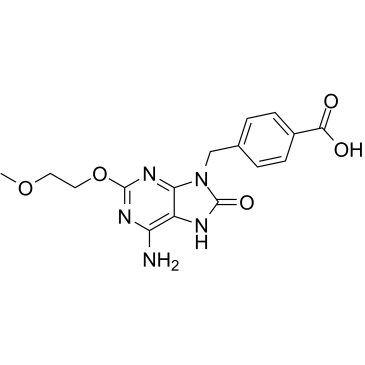
-
GC52501
2',3'-Dideoxyadenosine 5'-triphosphate (lithium salt)
An inhibitor of reverse transcriptases and DNA polymerases

-
GC67628
2',7'-Dichlorofluorescein
2',&7#39;-La dichlorofluorescéine agit comme une sonde fluorescente (Ex \u003d 496 nm et Em \u003d 525 nm) pour la mesure des espèces réactives de l'oxygène (ROS).
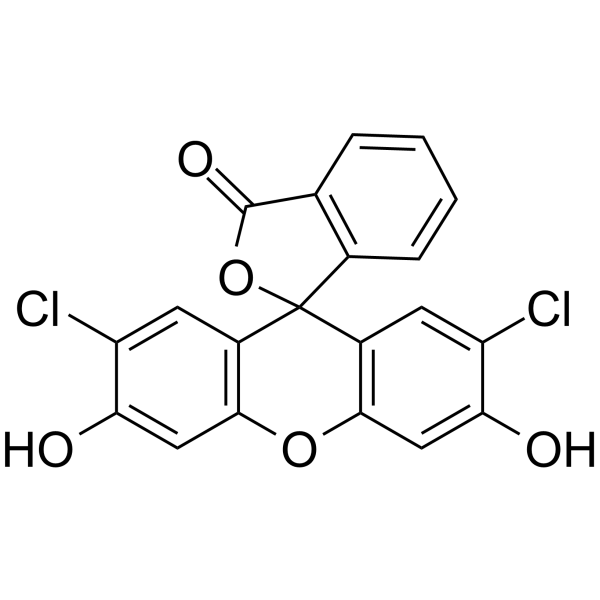
-
GC49823
2′-C-β-Methylguanosine
An active nucleoside metabolite of BMS-986094

-
GC49514
2′-Deoxyuridine-d2
An internal standard for the quantification of 2’-deoxyuridine

-
GC52122
2’-Deoxyadenosine-5’-diphosphate (sodium salt)
A nucleotide diphosphate

-
GC46508
2',2'-Difluoro-2'-deoxyuridine
An active metabolite of gemcitabine

-
GC42079
2',7'-Dichlorofluorescein diacetate
Le diacétate de 2',7'-dichlorofluorescéine (DCFH-DA) est une sonde fluorescente perméable aux cellules.

-
GC41281
2'-C-Methyladenosine
2'-C-Methyladenosine is an inhibitor of hepatitis C virus (HCV) replication (IC50 = 0.3 μM in Huh-7 human hepatoma cells) that is not cytotoxic at concentrations up to 100 μM.

-
GC42080
2'2'-cGAMP (sodium salt)
2'2'-cGAMP is a synthetic dinucleotide (CDN) that contains non-canonical 2'5'-phosphodiester bonds.

-
GC42090
2'3'-cGAMP (sodium salt)
2'3'-cGAMP is a second messenger produced from ATP and GTP by cGMP-AMP synthase (cGAS) in the cytoplasm of mammalian cells in response to the presence of DNA.

-
GC40415
2,3-dinor-11β-Prostaglandin F2α
2,3-dinor-11β-Prostaglandin F2α (2,3-dinor-11β-PGF2α) was recovered from the urine of both normal monkeys and humans when infused with radiolabeled PGD2, where it represented approximately 1% and 4% of the infused radiolabeled dose, respectively.
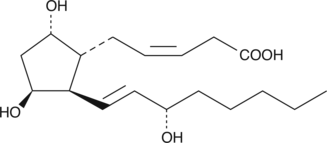
-
GC49671
2,3-Oxidosqualene
An intermediate in the biosynthesis of sterols

-
GC68044
2,4,6-Trihydroxybenzaldehyde
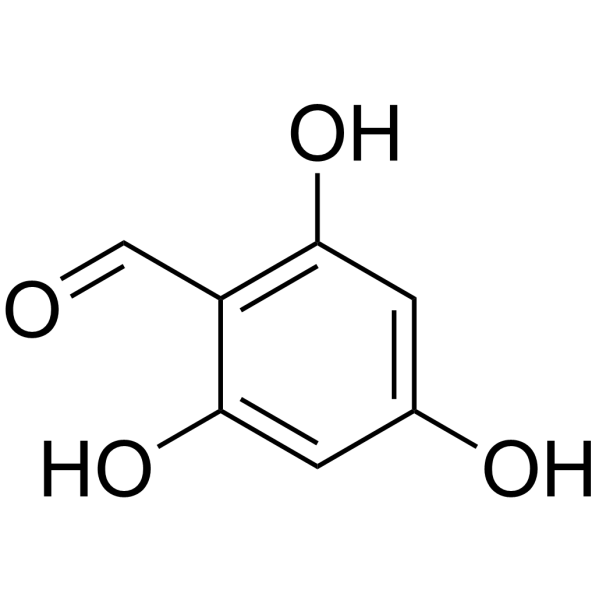
-
GC68452
2,4,6-Triiodophenol

-
GC46522
2,4-Dichlorobenzenesulfonyl chloride
A heterocyclic building block

-
GC42076
2,5-Deoxyfructosazine (hydrochloride)
2,5-Deoxyfructosazine is a pyrazine derivative that can be found in cured tobacco and is used as a flavoring agent in the food and tobacco industry.

-
GC39325
2,5-Dihydroxyacetophenone
La 2,5-dihydroxyacétophénone, isolée de Rehmanniae Radix Preparata, inhibe la production de médiateurs inflammatoires dans les macrophages activés en bloquant les voies de signalisation ERK1/2 et NF-κB.
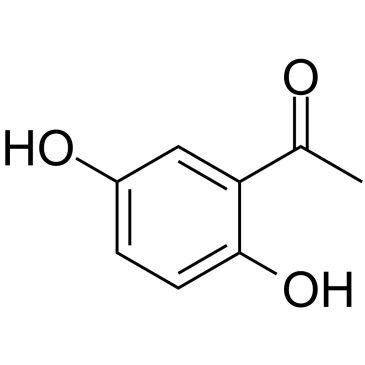
-
GC46057
2,5-Dihydroxycinnamic Acid phenethyl ester
An inhibitor of 5-LO

-
GC46502
2-(1-(Thiophen-2-yl)ethylidene)hydrazinecarbothioamide
An antimicrobial agent

-
GC42112
2-Acetyl-5-tetrahydroxybutyl Imidazole
Sphingosine-1-phosphate (S1P) lyase catalyzes the irreversible decomposition of S1P to hexadecanaldehyde and phosphoethanolamine.

-
GC46533
2-Amino-6-chloropurine
A precursor in the synthesis of nucleoside analogs

-
GC52029
2-Aminoflubendazole
Le 2-aminoflubendazole est le métabolite des benzimidazoles.

-
GC42123
2-Aminopurine (hydrochloride)
La 2-aminopurine (chlorhydrate) est un analogue fluorescent de la guanosine.

-
GC64739
2-Aminoquinoline
La 2-aminoquinoléine (2-quinolinamine) est un composé prometteur en tant qu'inhibiteur de nNOS biodisponible, mais souffre d'une faible inhibition de la nNOS humaine, d'une faible sélectivité par rapport À l'eNOS humaine et d'une liaison significative À d'autres cibles du SNC.
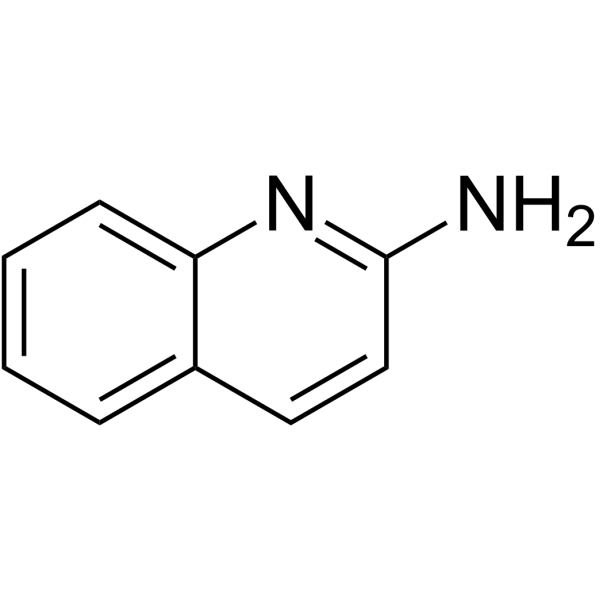
-
GC42135
2-chloro Palmitic Acid
L'acide 2-chloro palmitique, un médiateur lipidique inflammatoire, interfère avec la palmitoylation des protéines, induit des marqueurs de stress ER, réduit la teneur en ATP ER et active la transcription et la sécrétion d'IL-6 ainsi que d'IL-8.2-chloro L'acide palmitique perturbe la mitochondrie potentiel membranaire et induit le clivage de la procaspase-3 et de la PARP. L'acide palmitique 2-chloro peut traverser la barrière hémato-encéphalique (BBB) et compromettre les fonctions ER et mitochondriales dans la lignée cellulaire endothéliale du cerveau humain hCMEC/D3.

-
GC42136
2-chloro Stearic Acid
2-chloro Stearic acid is a bioactive fatty acid that accumulates in primary human monocytes and neutrophils as well as murine neutrophils stimulated with phorbol 12-myristate 13-acetate.

-
GC40675
2-deoxy-Artemisinin
2-deoxy-Artemisinin is an inactive metabolite of the antimalarial agent artemisinin.

-
GC40634
2-epi-Abamectin
2-epi-Abamectin is a degradation product of abamectin.

-
GC46544
2-Fluoro-4-iodo benzonitrile
A building block

-
GC45912
2-heptyl-3-hydroxy-4(1H)-Quinolone
A bacterial quorum-sensing signaling molecule

-
GC18391
2-hydroxy Decanoic Acid
2-hydroxy Decanoic acid is a fatty acid found in the lipophilic portion of the lipopolysaccharide fraction of P.
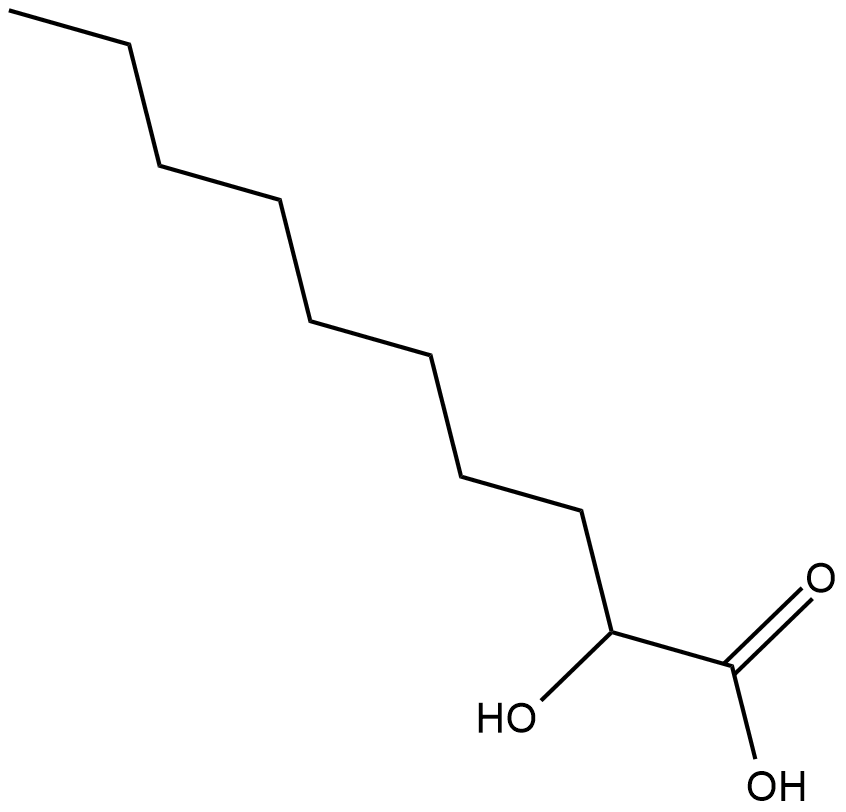
-
GC42166
2-hydroxy Myristic Acid
2-hydroxy Myristic acid is a hydroxy fatty acid that has been found in bovine, human, and horse milk, cow and buffalo cheeses, sea bass filet, seal oil, human vernix caseosa, and wool wax.

-
GC42171
2-hydroxy Stearic Acid methyl ester
2-hydroxy Stearic acid is a hydroxylated fatty acid methyl ester that broadens phase transition in dimyristoylphosphatidylcholine (DMPC) lipid membranes.

-
GC40944
2-hydroxy-6-Methylbenzoic Acid
2-hydroxy-6-Methylbenzoic acid is a constituent of G.

-
GC48910
2-Hydroxyanthraquinone
La 2-hydroxyanthraquinone, composé naturel, possède une activité antitumorale et immunosuppressive.

-
GC17084
2-Imino-4-methylpiperidine (acetate)
La 2-imino-4-méthylpipéridine (acétate) est un inhibiteur des isoformes de NO synthase (NOS) puissant et actif par voie orale avec des IC50 de 0,1 μ ; M, 1,1 &7#956 ; M et 0,2 μ ; M pour l'iNOS humaine (hiNOS), heNOS et hnNOS, respectivement.
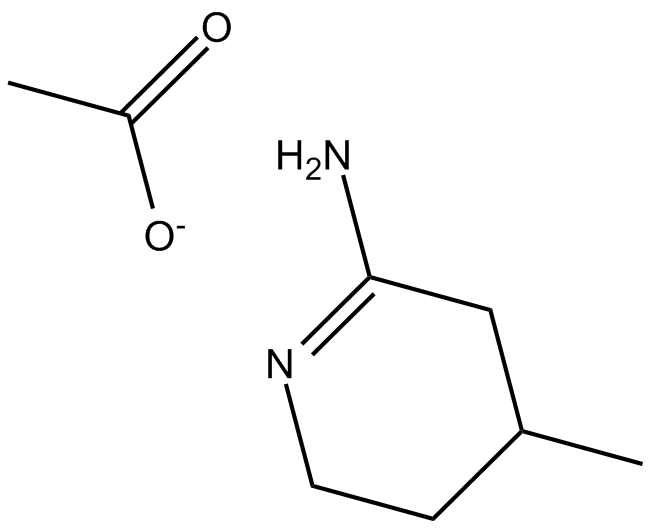
-
GC16664
2-Iminobiotin
La 2-iminobiotine (guanidinobiotine) est un analogue de la biotine (vitamine H ou B7).
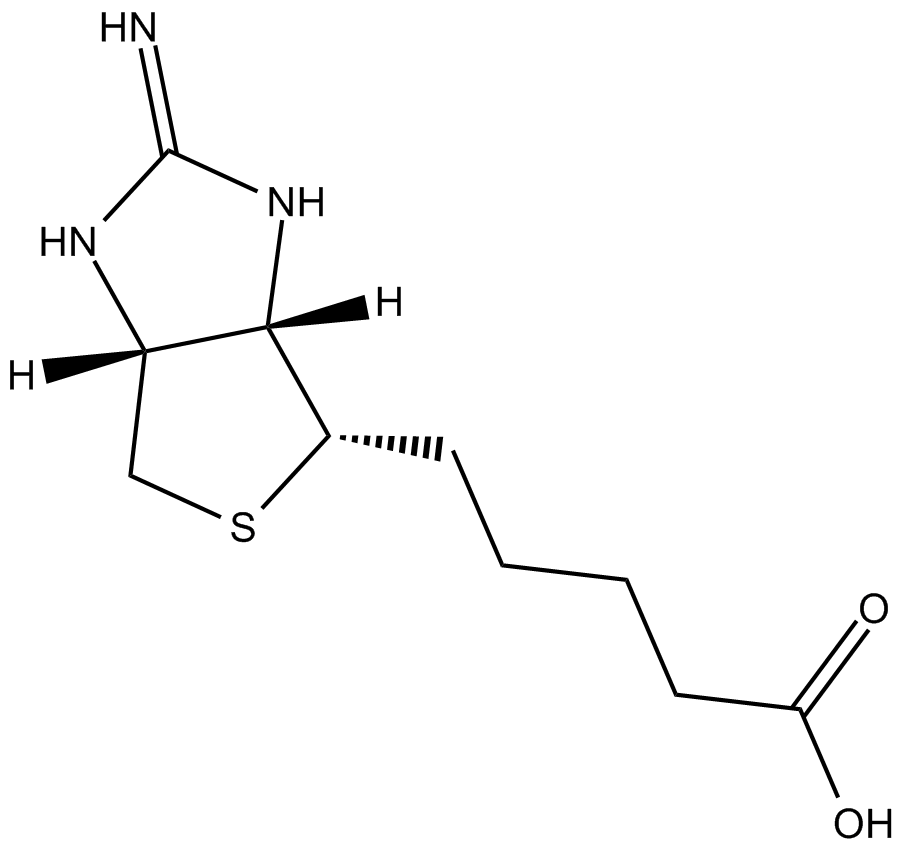
-
GC39326
2-Iminobiotin hydrobromide
Le bromhydrate de 2-iminobiotine (bromhydrate de guanidinobiotine) est un analogue de la biotine (vitamine H ou B7).
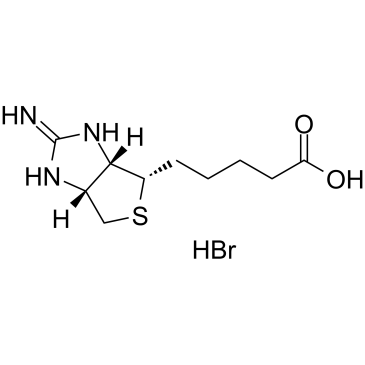
-
GC12166
2-Iminopiperidine hydrochloride
iNOS inhibitor
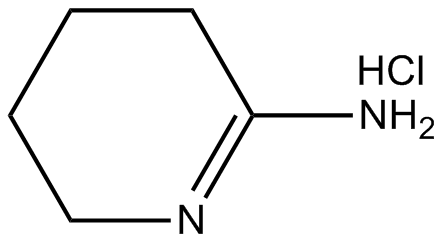
-
GC52140
2-Methoxyhydroquinone

-
GC42186
2-nonyl-3-hydroxy-4-Quinolone
2-nonyl-3-hydroxy-4-Quinolone is a quinolone compound produced by P.

-
GC52445
2-nonyl-3-hydroxy-4-Quinolone-d4
An internal standard for the quantification of 2-nonyl-3-hydroxy-4-quinolone

-
GC46553
2-Nonylquinolin-4(1H)-one
A quinolone alkaloid with diverse biological activities

-
GC52446
2-Nonylquinolin-4(1H)-one-d4
An internal standard for the quantification of 2-nonylquinolin-4(1H)-one

-
GC49786
2-NP-AOZ
Le 2-NP-AOZ est un dérivé 2-nitrophényle de l'AOZ.

-
GC49283
2-O-(α-D-Glucopyranosyl)glycerol
A compatible solute

-
GC35095
2-Phospho-L-ascorbic acid trisodium salt
Le sel trisodique de l'acide 2-phospho-L-ascorbique (acide 2-phospho-L-ascorbique trisodique) est un dérivé de la vitamine C À action prolongée qui peut stimuler la formation et l'expression du collagène.
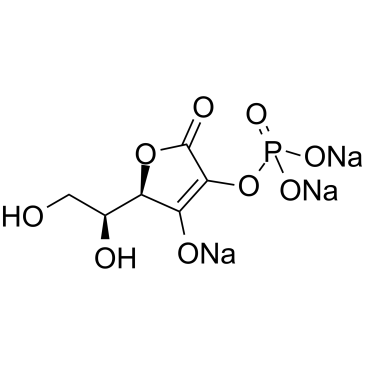
-
GC17951
2-TEDC
5-, 12-, and 15-lipoxygenase inhibitor
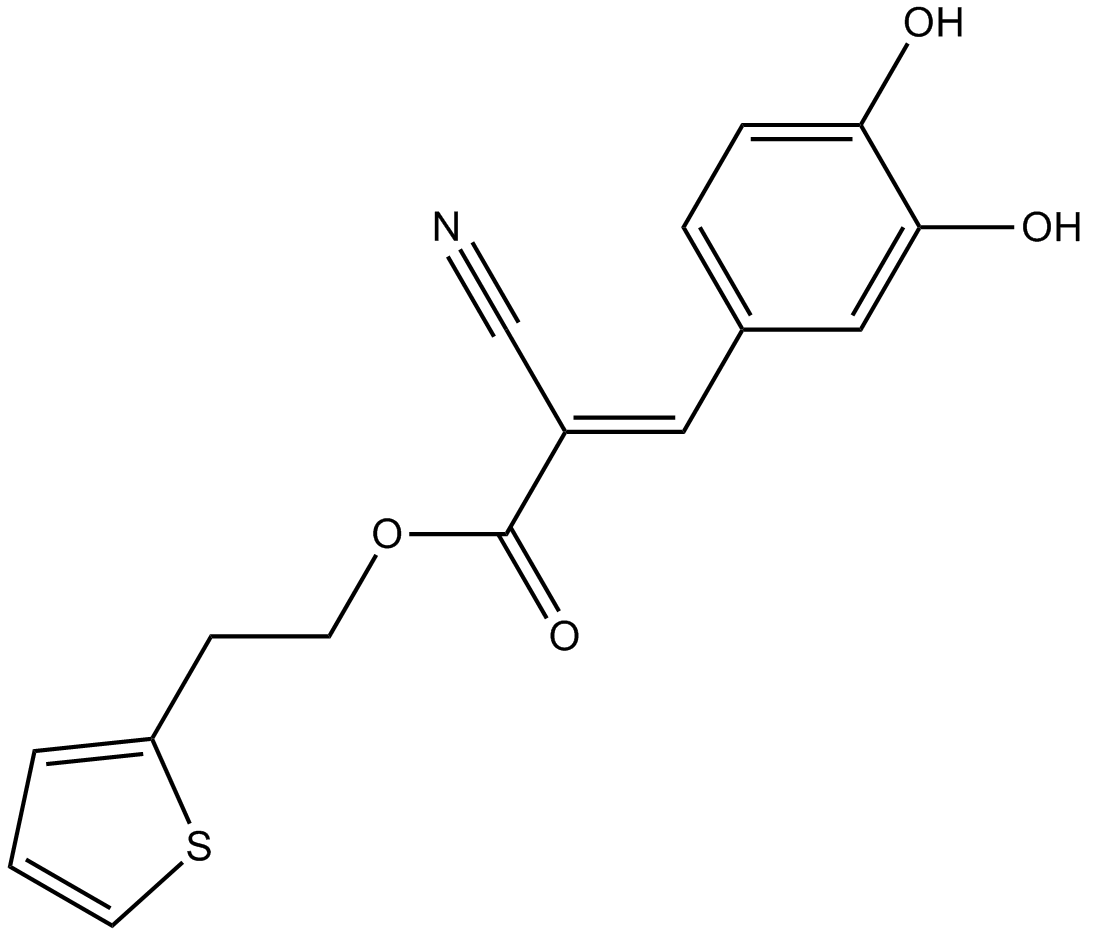
-
GC68043
2-tert-Butyl-1,4-benzoquinone

-
GC42193
2-Thenoyltrifluoroacetone
La 2-thénoyltrifluoroacétone est un agent chélateur.

-
GC15355
2-Trifluoromethyl-2'-methoxychalcone
Nrf2 activator
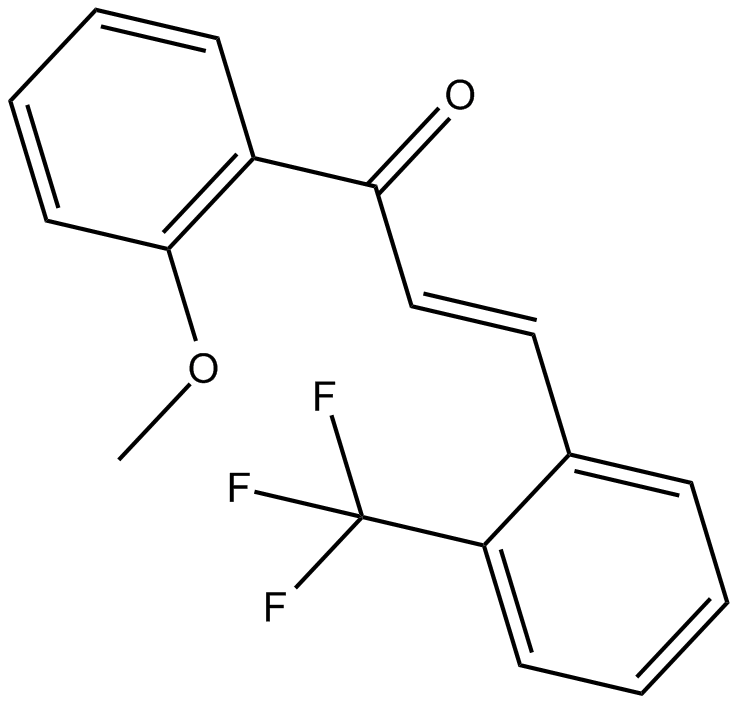
-
GC40960
20α-dihydro Prednisolone
20α-dihydro Prednisolone is a metabolite of prednisolone.

-
GC42082
20-carboxy Leukotriene B4
20-carboxy LTB4 is a metabolite of LTB4 in human neutrophils.

-
GC41387
20-hydroxy Arachidic Acid
20-hydroxy Arachidic acid is a hydroxylated fatty acid that has been found in the suberin component of silver birch (B.

-
GC41421
20-hydroxy Leukotriene B4
20-hydroxy LTB4 is a metabolite of LTB4 in human neutrophils.

-
GC60467
21-Acetoxypregna-1,4,9(11),16-tetraene-3,20-dione
La 21-acétoxyprégna-1,4,9(11),16-tétraène-3,20-dione est un intermédiaire de la synthèse des stéroÏdes delta 9,11, par exemple la vamorolone
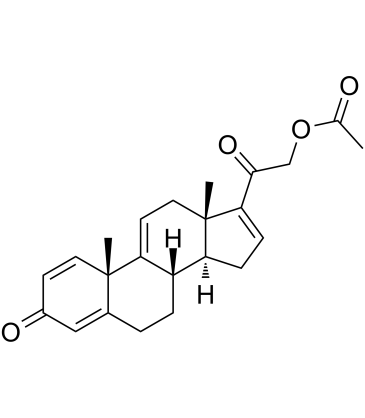
-
GC42087
21-desacetyl Deflazacort
21-desacetyl Deflazacort is the active glucocorticoid derived from the prodrug deflazacort.

-
GC40571
24(S),25-epoxy Cholesterol
24(S),25-epoxy Cholesterol is an oxysterol and the most abundant oxysterol in mouse ventral midbrain.

-
GC49365
25-Desacetyl Rifampicin
A major active metabolite of rifampicin

-
GC48482
28-Acetylbetulin
A lupane triterpenoid with anti-inflammatory and anticancer activities

-
GC48503
28-Deoxybetulin methyleneamine
A derivative of betulin

-
GC46549
2F-Peracetyl-Fucose
Le 2F-peracétyl-fucose (1,3,4-tri-O-acétyl-2-désoxy-2-fluoro-L-fucopyranos) agit comme un puissant inhibiteur de la fucosyltransférase (FUT).

-
GC49005
2S-Eriodictyol
A flavanone with antioxidant activity

-
GC25014
3',3'-cGAMP
3',3'-cGAMP (3',3'-cyclic GMP-AMP, Cyclic GMP-AMP, cGAMP) activates the endoplasmic reticulum (ER)-resident receptor stimulator of interferon genes (STING), thereby inducing an antiviral state and the secretion of type I IFNs.
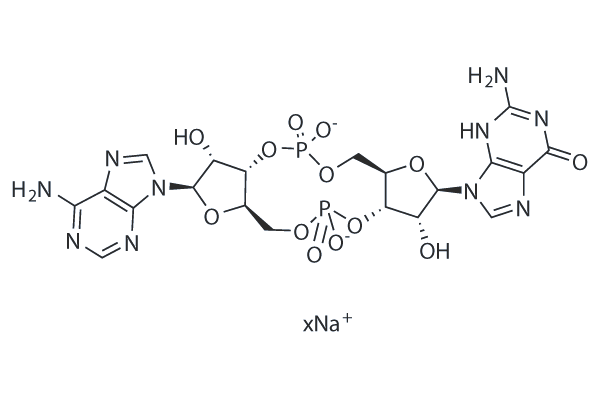
-
GC49122
3′-deoxy Thymidine
An antiviral nucleoside analog

-
GC49871
3’-Azido-2’,3’-dideoxyuridine
An antiviral nucleoside analog

-
GC34451
3',4'-Dihydroxyflavonol
Le 3',4'-dihydroxyflavonol (DiOHF) est un antioxydant efficace qui réduit le superoxyde et améliore la fonction d'oxyde nitrique (NO) dans les artères mésentériques du rat diabétique.
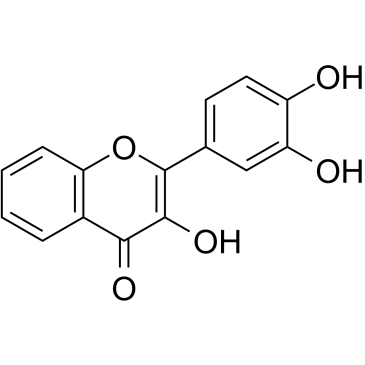
-
GC42312
3'-Sialyllactose (sodium salt)
3'-Sialyllactose consists of the monosaccharide N-acetylneuraminic acid linked to the galactosyl subunit of lactose at the 3 position.

-
GC42242
3'-sulfo Galactosylsphingosine (ammonium salt)
3'-sulfo Galactosylsphingosine is a form of sulfatide that is lacking the fatty acyl group.

-
GC42245
3'3'-cGAMP (sodium salt)
3'3'-cGAMP is a second messenger produced in bacteria by specific dinucleotide cyclases.

-
GN10006
3,4-Dihydroxybenzaldehyde
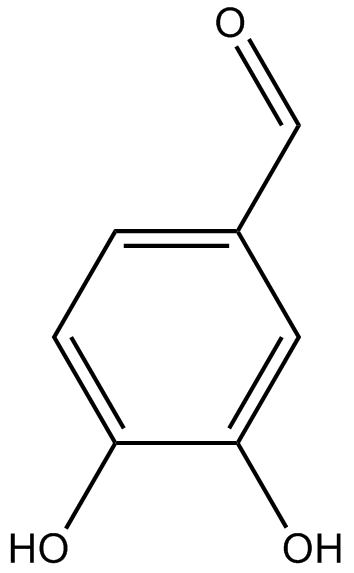
-
GC33992
3,4-Dimethoxycinnamic acid (O-Methylferulic acid)
L'acide 3,4-diméthoxycinnamique (acide O-méthylférulique) (acide O-méthylférulique) est un monomère extrait et purifié de Securidaca inappendiculata Hassk.
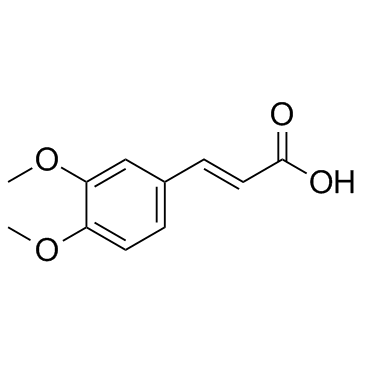
-
GC61673
3,5-Di-tert-butylphenol
Le 3,5-di-tert-butylphénol est un composé organique volatil aux activités anti-biofilm et antifongique.
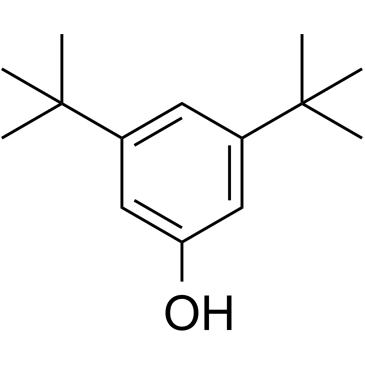
-
GC46577
3,5-Dihydroxybenzaldehyde
A building block

-
GC64762
3,6-Dihydroxyflavone
La 3,6-dihydroxyflavone est un agent anticancéreux. La 3,6-dihydroxyflavone diminue en fonction de la dose et du temps la viabilité cellulaire et induit l'apoptose en activant la cascade de caspases, en clivant la poly (ADP-ribose) polymérase (PARP). La 3,6-dihydroxyflavone augmente le stress oxydatif intracellulaire et la peroxydation lipidique.
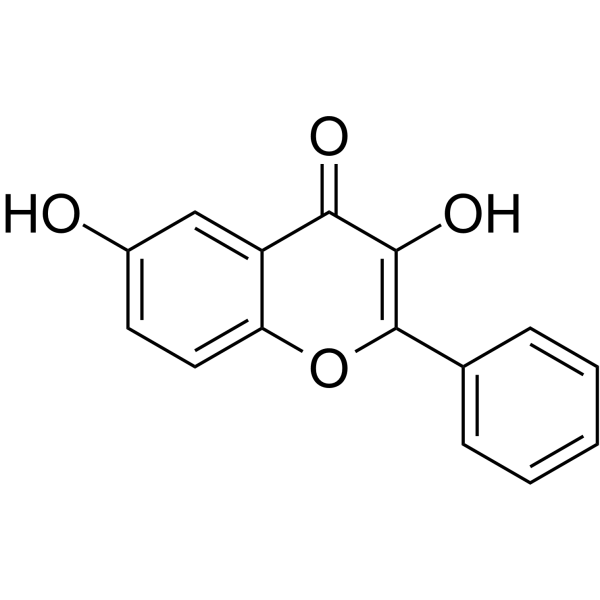
-
GC49169
3,8’-Biapigenin
3,8’-Biapigenine est une biflavone dans Hypericum perforatum L.

-
GC52324
3-(3-Hydroxyphenyl)propionic Acid sulfate
A metabolite of certain phenols and glycosides

-
GC14282
3-acetyl-11-keto-β-Boswellic Acid
L'acide 3-acétyl-11-céto-β-boswellique (acétyl-11-céto-β-acide boswellique) est un composé triterpénoÏde actif issu de l'extrait de boswellia serrate et un nouvel activateur Nrf2.
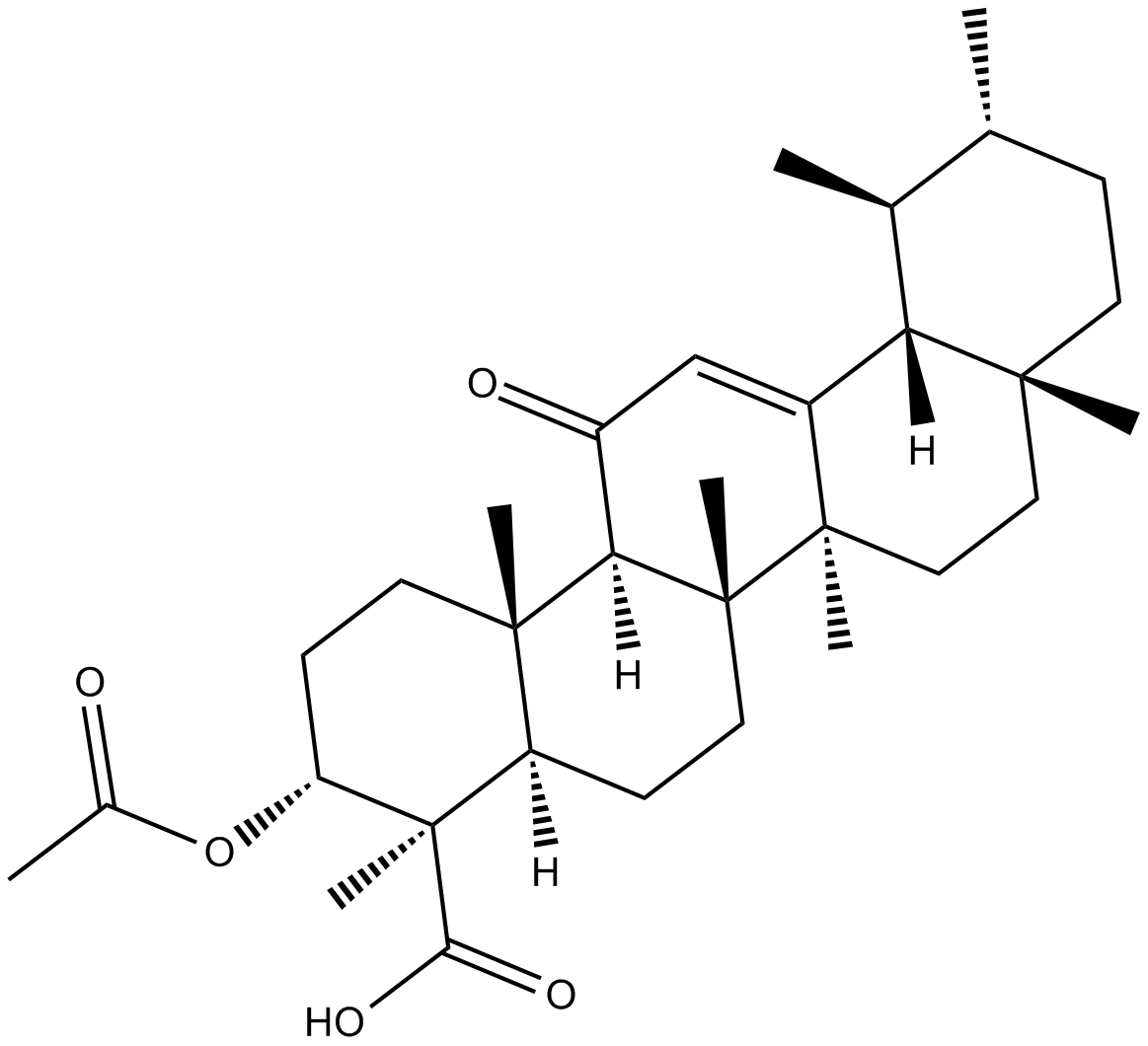
-
GC68081
3-Amino-1,2,4-triazine

-
GC46583
3-Amino-2,6-Piperidinedione
An active metabolite of (±)-thalidomide

-
GC52129
3-Amino-5-hydroxybenzoic Acid

-
GC49849
3-Aminosalicylic Acid
A salicylic acid derivative

-
GC38208
3-Bromo-7-nitroindazole
A potent inhibitor of nNOS
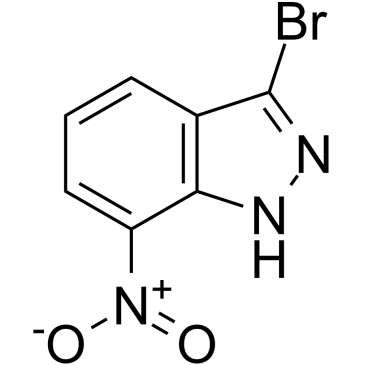
-
GC10385
3-Bromo-7-nitroindazole
Le 3-bromo-7-nitroindazole est un inhibiteur plus puissant et sélectif de l'oxyde nitrique synthase neuronale (nNOS) que l'eNOS ou l'oxyde nitrique synthase inductible (iNOS).
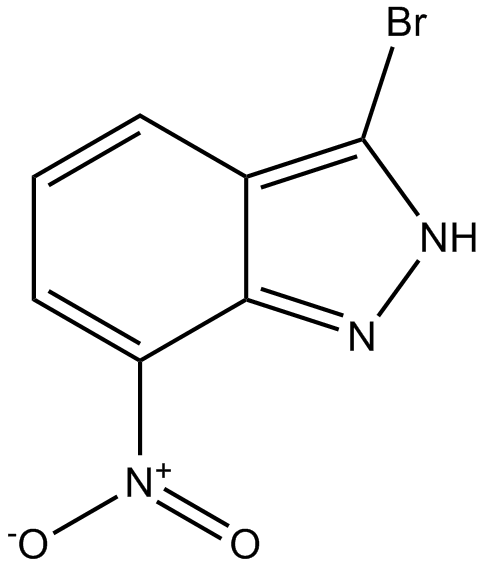
-
GC42259
3-Deaza-2'-deoxyadenosine
3-Deaza-2'-deoxyadenosine strongly inhibits lymphocyte-mediated cytolysis with low cytotoxicity when applied at 100 μM.

-
GC62794
3-Demethylcolchicine
La 3-déméthylcolchicine, un métabolite de la colchicine, possède un groupe hydroxy sur son cycle carboné qui pourrait participer au piégeage des radicaux et inhibe nettement l'œdème de la carraghénine.
